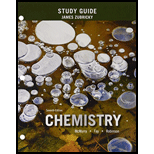
Interpretation:
The ground-state electron configuration for the following ion should be determined:
Ni2+
Concept introduction: Electronic configuration represents the arrangement of electrons in different orbitals following the rules of filling of electrons in the atomic orbitals such as s orbital can have maximum of two electrons, p orbital can have maximum of 6 electrons and the maximum number of electrons in d and f orbitals are 10 and 14 respectively.
All the suborbital can have maximum of 2 electrons with opposite spins.
Answer to Problem 6.1P
Solution:
Explanation of Solution
The cation Ni2+ is formed when parent atom Ni loses two electrons. Ni has an
Nickel loses its two 4s electrons to give Ni2+ with the Nickel configuration as follows:
(c)
Interpretation:
The ground-state electron configuration for the following ion should be determined:
N3-
Concept introduction: Electronic configuration represents the arrangement of electrons in different orbitals following the rules of filling of electrons in the atomic orbitals such as s orbital can have maximum of two electrons, p orbital can have maximum of 6 electrons and the maximum number of electrons in d and f orbitals are 10 and 14 respectively.
All the suborbital can have maximum of 2 electrons with opposite spins.
Answer to Problem 6.1P
Solution:
Explanation of Solution
The anion N3- is formed when parent atom nitrogen gains three electrons. N has an atomic number 7, that is, N atom has 7 electrons. The electrons configuration of N is as follows:
Nitrogen gains 3 electrons to give N3- with the configuration as follows:
Want to see more full solutions like this?
Chapter 6 Solutions
Student Study Guide for Chemistry
 ChemistryChemistryISBN:9781305957404Author:Steven S. Zumdahl, Susan A. Zumdahl, Donald J. DeCostePublisher:Cengage Learning
ChemistryChemistryISBN:9781305957404Author:Steven S. Zumdahl, Susan A. Zumdahl, Donald J. DeCostePublisher:Cengage Learning ChemistryChemistryISBN:9781259911156Author:Raymond Chang Dr., Jason Overby ProfessorPublisher:McGraw-Hill Education
ChemistryChemistryISBN:9781259911156Author:Raymond Chang Dr., Jason Overby ProfessorPublisher:McGraw-Hill Education Principles of Instrumental AnalysisChemistryISBN:9781305577213Author:Douglas A. Skoog, F. James Holler, Stanley R. CrouchPublisher:Cengage Learning
Principles of Instrumental AnalysisChemistryISBN:9781305577213Author:Douglas A. Skoog, F. James Holler, Stanley R. CrouchPublisher:Cengage Learning Organic ChemistryChemistryISBN:9780078021558Author:Janice Gorzynski Smith Dr.Publisher:McGraw-Hill Education
Organic ChemistryChemistryISBN:9780078021558Author:Janice Gorzynski Smith Dr.Publisher:McGraw-Hill Education Chemistry: Principles and ReactionsChemistryISBN:9781305079373Author:William L. Masterton, Cecile N. HurleyPublisher:Cengage Learning
Chemistry: Principles and ReactionsChemistryISBN:9781305079373Author:William L. Masterton, Cecile N. HurleyPublisher:Cengage Learning Elementary Principles of Chemical Processes, Bind...ChemistryISBN:9781118431221Author:Richard M. Felder, Ronald W. Rousseau, Lisa G. BullardPublisher:WILEY
Elementary Principles of Chemical Processes, Bind...ChemistryISBN:9781118431221Author:Richard M. Felder, Ronald W. Rousseau, Lisa G. BullardPublisher:WILEY





